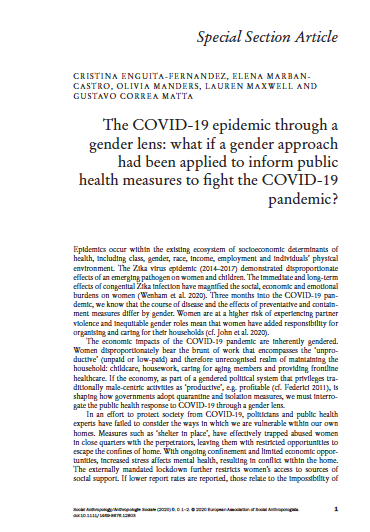Epidemics occur within the existing ecosystem of socioeconomic determinants of health, including class, gender, race, income, employment and individuals’ physical environment. The Zika virus epidemic (2014–2017) demonstrated disproportionate effects of an emerging pathogen on women and children. The immediate and long‐term effects of congenital Zika infection have magnified the social, economic and emotional burdens on women (Wenham et al. 2020). Three months into the COVID‐19 pandemic, we know that the course of disease and the effects of preventative and containment measures differ by gender. Women are at a higher risk of experiencing partner violence and inequitable gender roles mean that women have added responsibility for organising and caring for their households (cf. John et al. 2020).
Cristina Enguita-Fernandez, Elena Marban-Castro, Olivia Manders, Lauren Maxwell and Gustavo Correa Matta. (2020). The COVID‐19 epidemic through a gender lens: what if a gender approach had been applied to inform public health measures to fight the COVID‐19 pandemic? Social Anthropology. doi.org/10.1111/1469-8676.12803.






